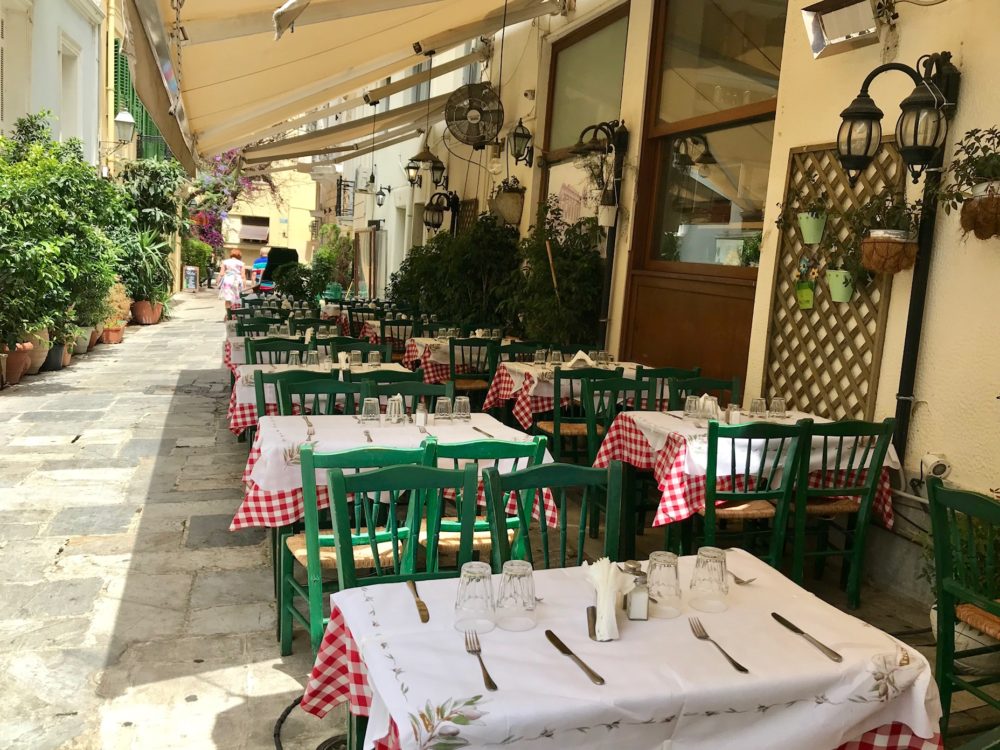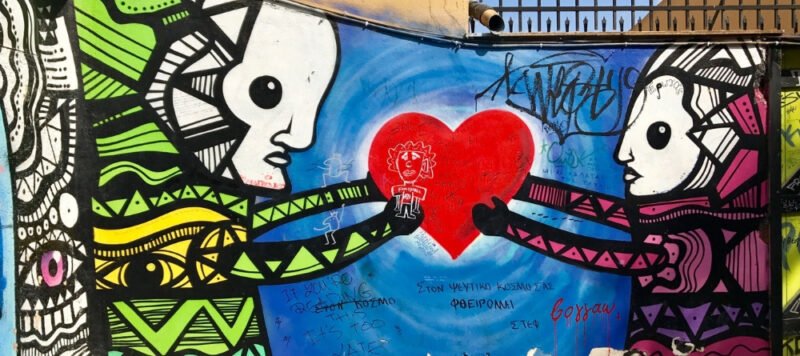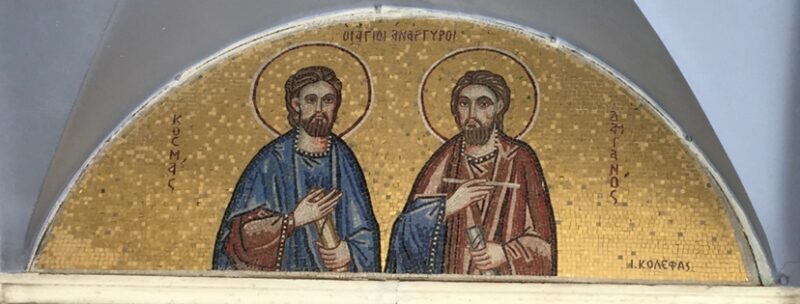Plaka (Πλάκα in Greek) is a picturesque district of Athens. It’s located right at the foot of the Acropolis. This district is both the historic and tourist heart of the Greek capital. There’s a maze of narrow, staircased streets, low houses decorated with flowers, abundant vegetation in places, few or no cars, numerous cafés and taverns… a charming place that’s a must-see!
Plaka, did you say Plaka?
The origin of the word Plaka is uncertain and gives rise to multiple interpretations.
In modern Greek, the term “Plaka” has a double meaning. It means “joke“. But also “paving stone“. And indeed, the streets of Plaka are cobbled.
It is also said that the name Plaka comes from the Arvanites, an Albanian population who emigrated to Greece and populated this part of the city. The Arvanites nicknamed the area where they lived “The Arvanites”.
In short, the true origin of the name of this emblematic district of Athens remains a mystery.
The historic heart of Athens
Plaka is the oldest inhabited district of Athens. As you stroll around, you can admire the marks of different eras. The history of Greece seems to pass before our eyes: ancient remains, houses dating back to Ottoman times, small Byzantine churches scattered here and there, neoclassical buildings and the ultra-modern graffiti of today.
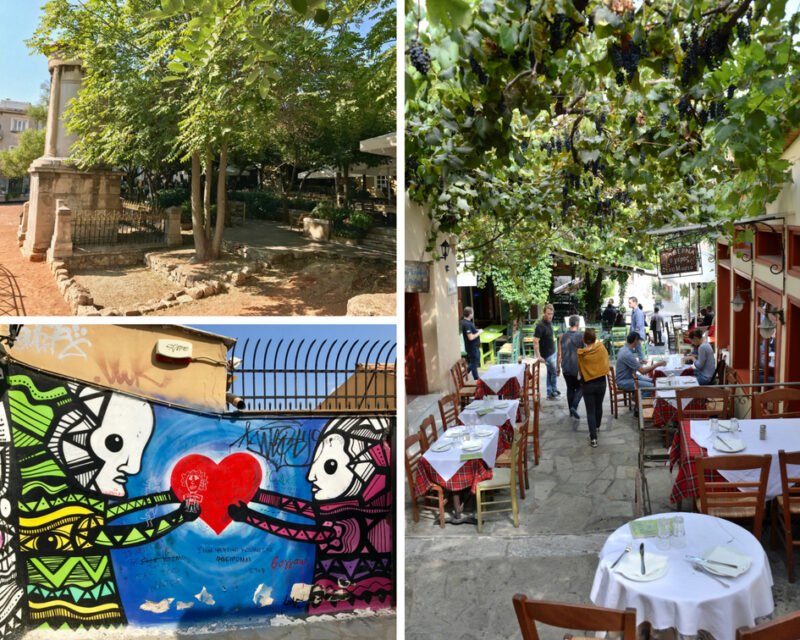
The Lysicrates monument, located on the corner of Vyronos, Sellei and Liskratous streets, dates back to ancient times. Dating from 334 B.C., it commemorated the winners of prizes awarded to the best theater troupes.
During the years of Ottoman occupation, Plaka was nicknamed the “Turkish quarter of Athens”. Why? Simply because the Turkish Governor had set up his headquarters in this district.
During the War of Independence, which began in 1821, Plaka was largely emptied of inhabitants fleeing the battles. It was only after independence, when the first king of Greece, Otto I, chose Athens to become the capital of the new Greek state, that the Plaka district was repopulated and breathed new life. Athenian high society moved to Plaka and built neoclassical houses that can still be admired today. These pastel-colored buildings can be recognized by their marble balconies and roofs adorned with wavy brick figures (called acroteria).
Anafiotika, a village inside Plaka
The heart of Plaka is also home to Anafiotika, a small Cycladic confetti at the foot of the Acropolis. This micro-neighborhood was built by workers from the island of Anafi who came to rebuild the city after the war of independence. By day, they built the Palace of King Otto I, among other buildings, and by night they built their little houses at the foot of the Acropolis. Don’t miss a trip to Anafiotika, one of our favorites in Athens!
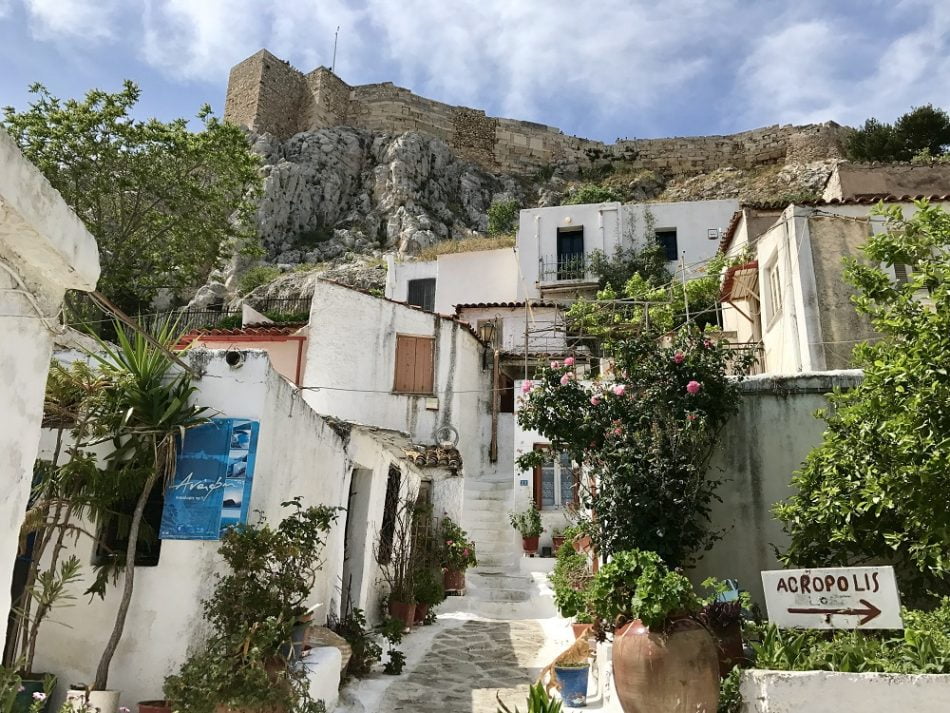
Shopping in Plaka
Today, Plaka is one of Athens’ most popular tourist areas. This is quickly apparent from the number of souvenir stores lining the main streets of this district, notably Adrianou and Kydathineon streets. There are also many more or less traditional restaurants.
But you can still get off the beaten track and find some nice, authentic addresses in Plaka.
To find out more, read our article on our favorites in Plaka.
Itinerary and good addresses in Plaka
Although Plaka has become very touristy, a visit to this district is still a must in Athens. So, to help you, we’ve put together an itinerary that will enable you to discover the great classics of Plaka as well as the little hidden treasures of this district. Here it is!
We’d also like to share with you our favorite addresses in Plaka : boutiques, bars, restaurants, small museums, cultural activities… find all our favorites in this article.
Finally, the best way to fully appreciate Plaka and discover its secret corners is to take a guided tour. We warmly recommend Clément, a Frenchman based in Athens, who offers a tailor-made city tour with a local of Plaka and Athens in general.
Laure M.
Keep walking and discover the neighbourhoods around Plaka:
Plaka: Metro Monastiraki (lines 1 and 3), Syntagma (lines 2 and 3), Akropolis (line 2).
Updated April 18, 2024
